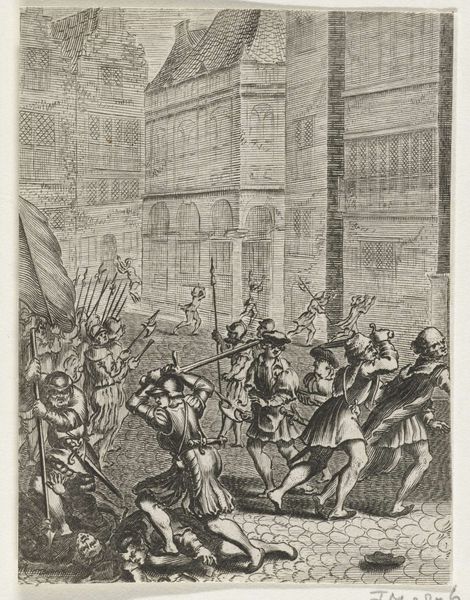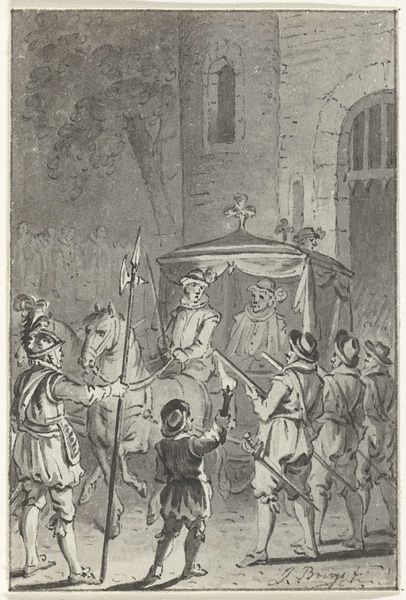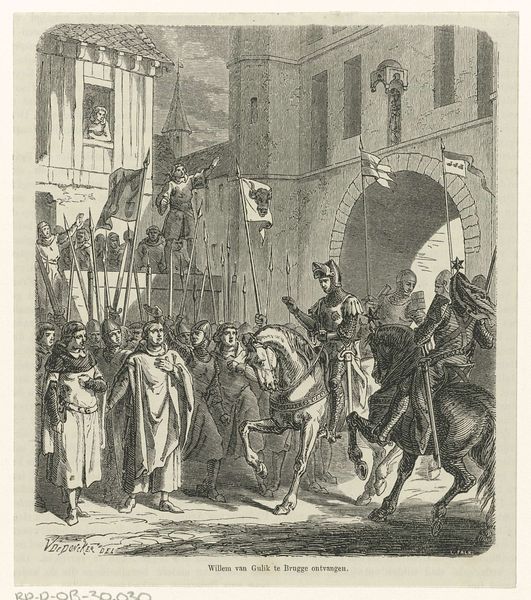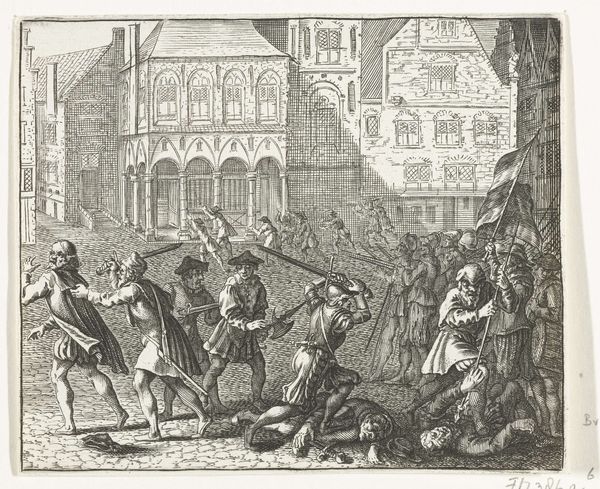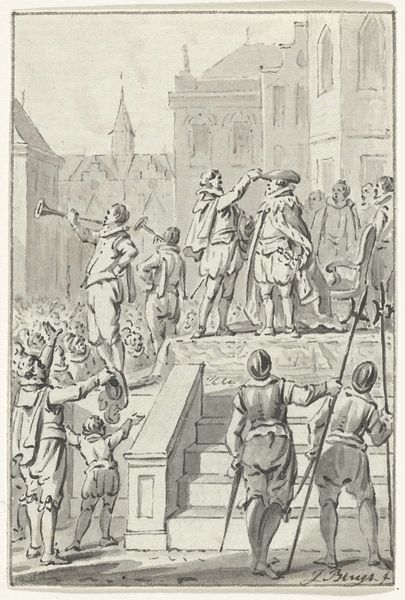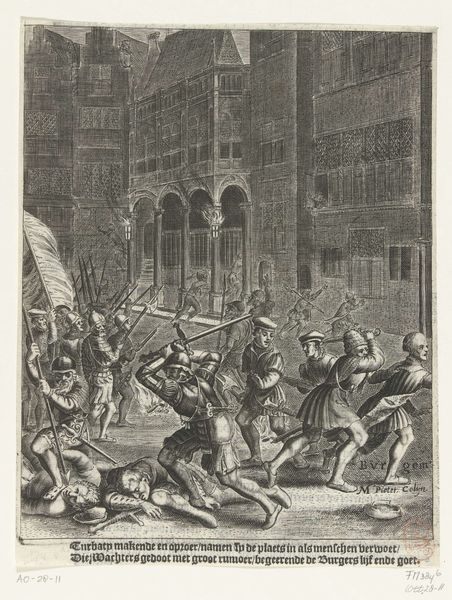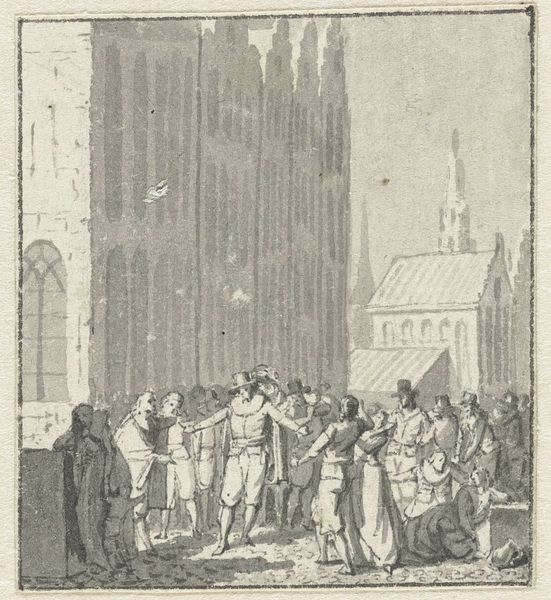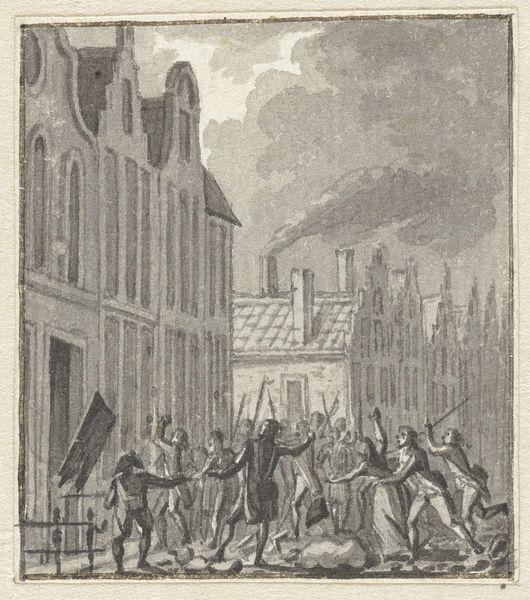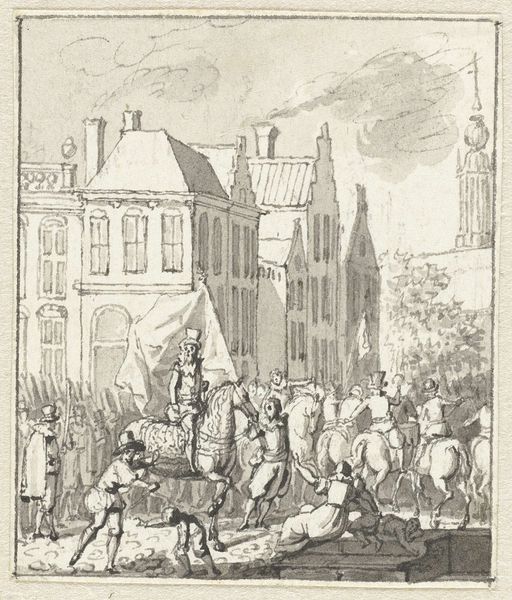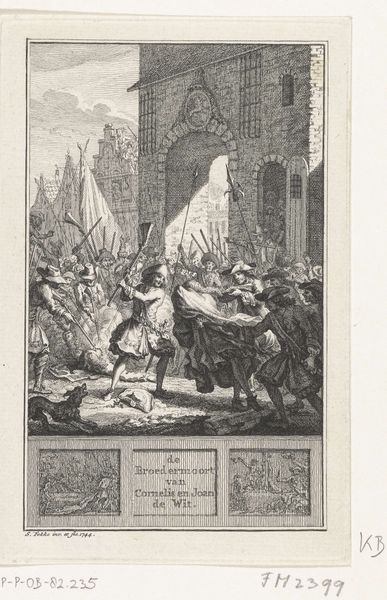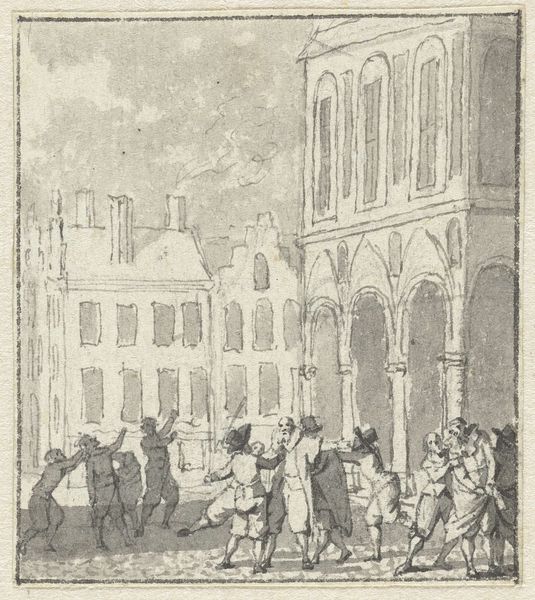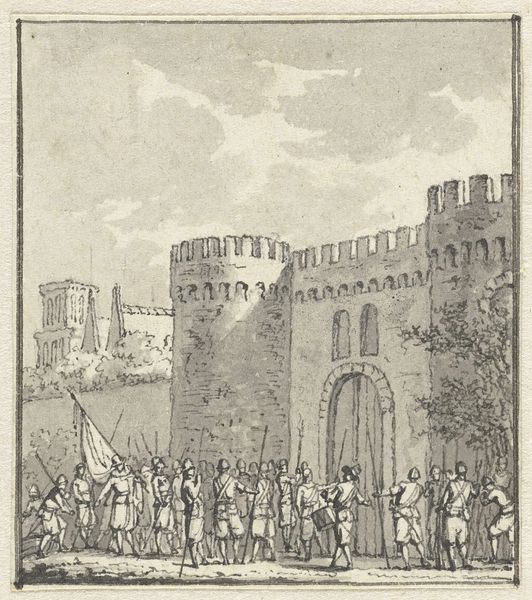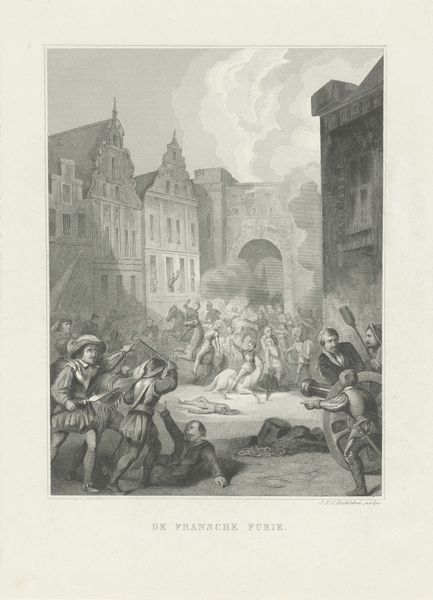
drawing, ink
#
drawing
#
narrative-art
#
ink
#
cityscape
Dimensions: height 65 mm, width 55 mm
Copyright: Rijks Museum: Open Domain
Editor: This drawing, "In 't Jaar 1672," made around 1789-1810, uses ink to depict what looks like a very turbulent scene in a city. It's quite chaotic. What kind of story do you think it's telling? Curator: Well, the title itself gives us a clue. "In 't Jaar 1672" translates to "In the Year 1672," a year of great upheaval in Dutch history known as the "Rampjaar," or Disaster Year. This piece is interesting because it's created so much later. How do you think it serves to remind people about collective memory? Editor: That’s interesting! It almost feels like political commentary from a distance. Given the date it was made, I wonder if it’s also referencing contemporary anxieties, perhaps about revolution like what was happening in France at the time? Curator: Precisely! The French Revolution absolutely influenced how artists viewed and portrayed past events. Notice the prominence given to the act of violence itself, right in the foreground. How does focusing on a very dramatic, visible scene influence how future generations will regard the same event? Editor: It makes it much more visceral. I suppose rather than historical record it is almost a warning about mob rule. The way it depicts the city is very foreboding as well. Curator: Yes, that heavy use of ink really heightens the drama. And note that the artist chose a drawing. Printmaking and drawings were often how political opinions circulated, before photography and the internet of course. Editor: So, the choice of medium itself is political! That makes so much sense! Curator: Indeed. We should consider what happens when the public engages with art that visualizes politically charged topics like these historical re-enactments or interpretations of them. Editor: This has really shifted my perspective on historical narrative paintings; they are as much about the moment they were created as they are about the moment they depict! Curator: Exactly! Examining these works helps us better understand public consciousness in any time period.
Comments
No comments
Be the first to comment and join the conversation on the ultimate creative platform.
